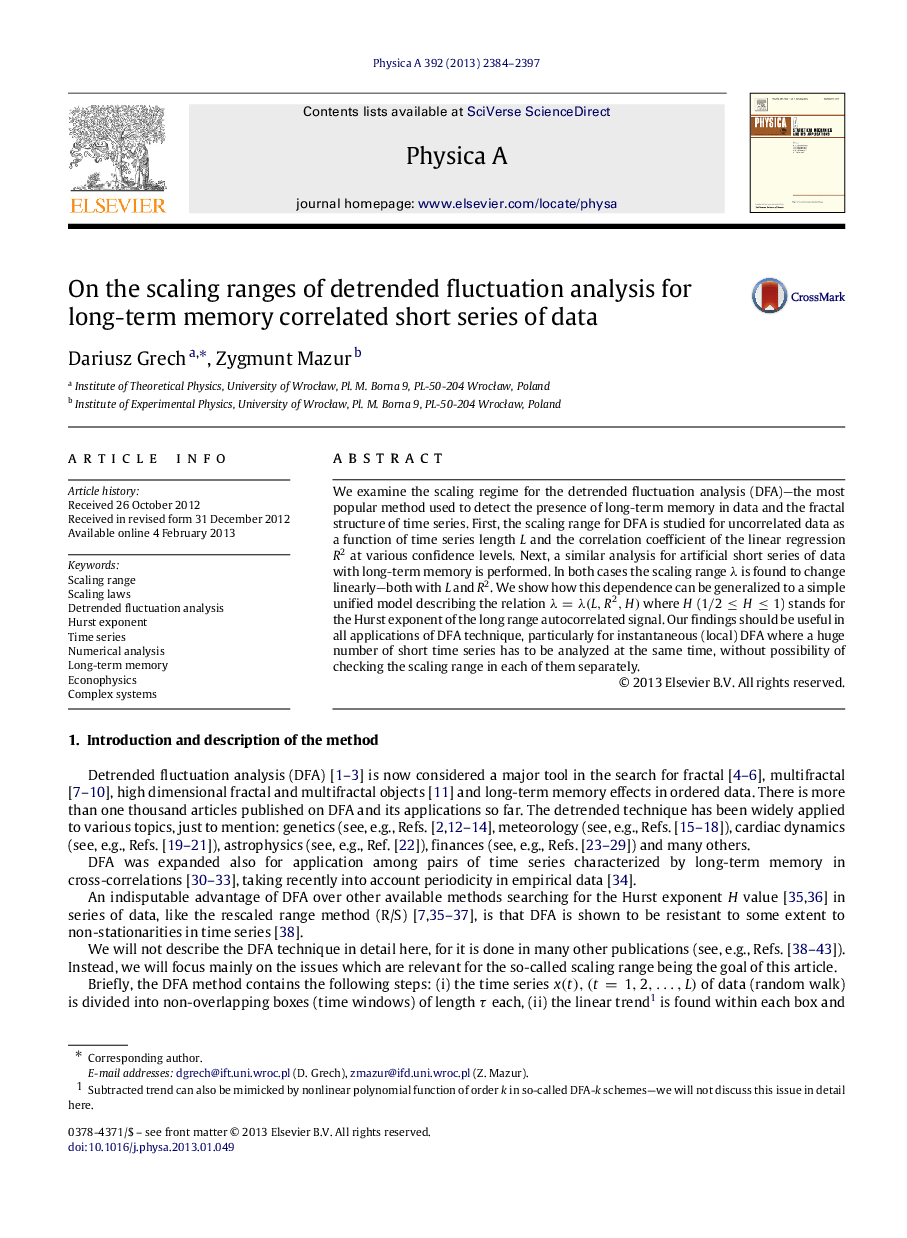| Article ID | Journal | Published Year | Pages | File Type |
|---|---|---|---|---|
| 975170 | Physica A: Statistical Mechanics and its Applications | 2013 | 14 Pages |
We examine the scaling regime for the detrended fluctuation analysis (DFA)—the most popular method used to detect the presence of long-term memory in data and the fractal structure of time series. First, the scaling range for DFA is studied for uncorrelated data as a function of time series length LL and the correlation coefficient of the linear regression R2R2 at various confidence levels. Next, a similar analysis for artificial short series of data with long-term memory is performed. In both cases the scaling range λλ is found to change linearly—both with LL and R2R2. We show how this dependence can be generalized to a simple unified model describing the relation λ=λ(L,R2,H)λ=λ(L,R2,H) where HH (1/2≤H≤11/2≤H≤1) stands for the Hurst exponent of the long range autocorrelated signal. Our findings should be useful in all applications of DFA technique, particularly for instantaneous (local) DFA where a huge number of short time series has to be analyzed at the same time, without possibility of checking the scaling range in each of them separately.
► We find relations for the scaling range of the detrended fluctuation analysis (DFA). ► They are expressed by length of data, memory level and coefficient of the linear regression. ► They allow to estimate the scaling range for arbitrary length of short autocorrelated data. ► Results strike with simplicity and are irreplaceable in analysis of time series evolution.
